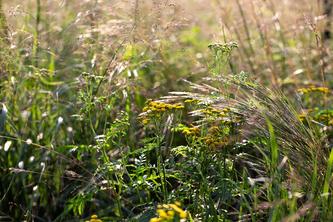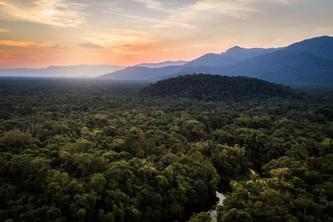
MINNEAPOLIS/ST. PAUL (05/02/2023) — Minnesota’s Fishing Opener is on May 13 this year and the spread of aquatic invasive species (AIS) is a top concern for many as anglers and boaters return to the lakes.
Nick Phelps, Ph.D., with the Minnesota Aquatic Invasive Species Research Center at the University of Minnesota, answers questions about the steps you can take to help stop the spread of aquatic invasive species and what researchers are currently doing to protect Minnesota’s lakes, rivers, streams and ponds.
Q: What are aquatic invasive species and why are they a problem?
Aquatic invasive species are plants, animals and harmful microbes that were introduced from outside an ecosystem by humans, became established and spread. They can cause negative impacts to the local ecosystem, economy and human health. Problematic invaders have re-engineered our ecosystems, caused massive economic impacts and changed the way we use and enjoy our lakes, rivers and wetlands. While not all change is bad, there are very few examples where AIS introductions have been helpful.
Q: What aquatic invasive species are in Minnesota?
In Minnesota, there are invasive fish, such as common carp and invasive bigheaded carps; invasive plants such as Eurasian watermilfoil and starry stonewort; invasive invertebrates such as zebra mussels and spiny water flea; and invasive microbes. Unfortunately, the list of AIS already in Minnesota is long and there are many more on the doorstep. However, it is important to remember that only about seven percent of Minnesota’s lakes are on the DNR’s infested waters list and less than three percent of Minnesota’s lakes are infested with zebra mussels. This is not a lost cause — there is still a lot to protect. And there have been some big wins.
Q: What steps can I take to help stop the spread?
“Clean-Drain-Dispose” isn’t only best practice for prevention, it is also the law in Minnesota. The research shows that doing these few simple steps when your boat or equipment leaves a waterbody — infested or not — can make a major difference. If possible, it is also a good idea to dry your boat and equipment for several days in between visiting lakes to be sure no viable AIS can be spread. In addition, I’d suggest joining the hundreds of community scientists in Minnesota who are part of our AIS Detectors program. This is a great opportunity to get actively involved and make a difference in your community.
Q: What do you anticipate will be the biggest challenges related to AIS this year?
Despite numerous scientific discoveries and dedicated efforts leading to success stories, the narrative around aquatic invasive species can often sound overwhelming, inevitable or hopeless. It is easy to fall into despair when we consider the sustained effort it takes to keep our state’s waterways healthy. Our biggest challenge right now is addressing these assumptions so we can collectively move forward. There is no reason to accept yesterday’s consequences as tomorrow’s new normal, nor should we leave our problems for the next generation. For example, we know that local AIS prevention can slow the spread of AIS and we are closer than ever to developing innovative control strategies for established populations of AIS. We need to build on our positive momentum, inspire action with others and proactively work together to solve our AIS problems.
Q: What is the University of Minnesota doing about AIS?
The Minnesota Aquatic Invasive Species Research Center (MAISRC) located at the University of Minnesota is a one-of-a-kind program and a national leader in advancing solutions to our AIS problems. Every day we are pushing the bounds of our scientific understanding to fill key knowledge gaps and develop tools that can be used by natural resource managers, practitioners, policymakers and the public. From the state capital to the end of the dock, solutions are within reach.
Nick Phelps, Ph.D., is an associate professor in the Department of Fisheries, Wildlife and Conservation Biology and the director of the Minnesota Aquatic Invasive Species Research Center. His areas of expertise include aquatic invasive species, fish health and risk-based management.
About the College of Food, Agricultural and Natural Resource Sciences
The University of Minnesota’s College of Food, Agricultural and Natural Resource Sciences (CFANS) strives to inspire minds, nourish people, and sustainably enhance the natural environment. CFANS has a legacy of innovation, bringing discoveries to life through science and educating the next generation of leaders. Every day, students, faculty, and researchers use science to address the grand challenges of the world today and in the future. CFANS offers an unparalleled expanse of experiential learning opportunities for students and the community, with 12 academic departments, 10 research and outreach centers across the state, the Minnesota Landscape Arboretum, the Bell Museum of Natural History, and dozens of interdisciplinary centers.
About “Talking...with U of M”
“Talking...with U of M” is a resource whereby University of Minnesota faculty answer questions on current and other topics of general interest. Feel free to republish this content. If you would like to schedule an interview with the faculty member or have topics you’d like the University of Minnesota to explore for future “Talking...with U of M,” please contact University Public Relations at [email protected].
- Categories:
- Agriculture and Environment
- Water





